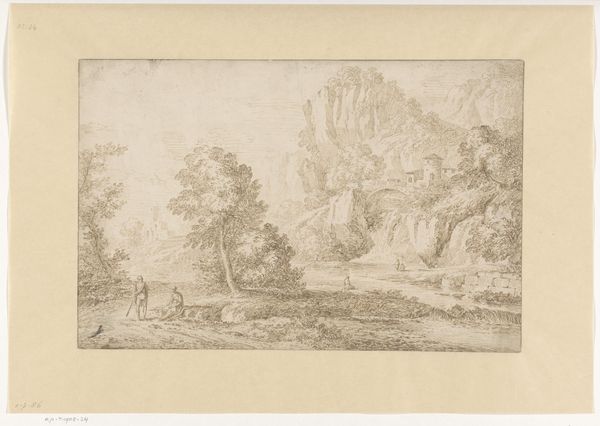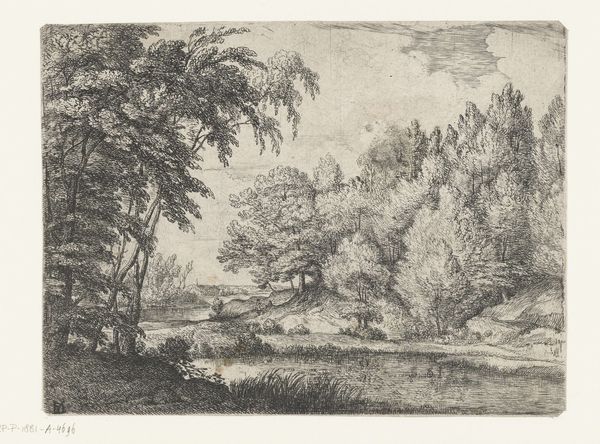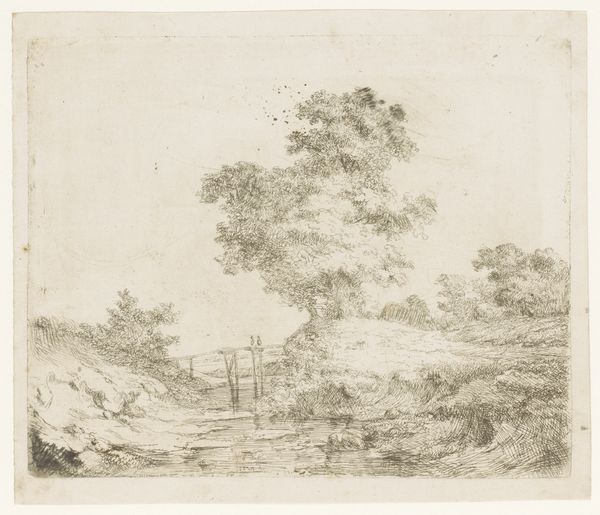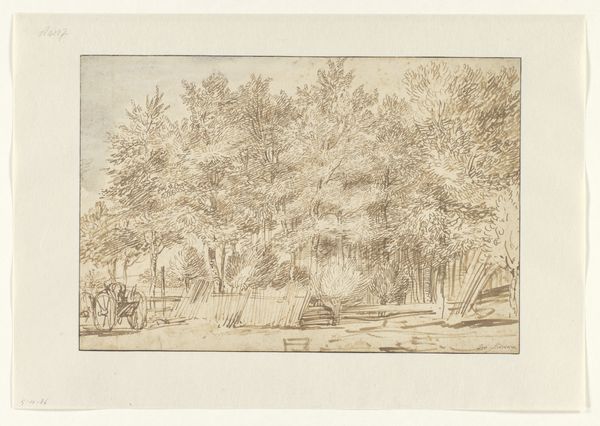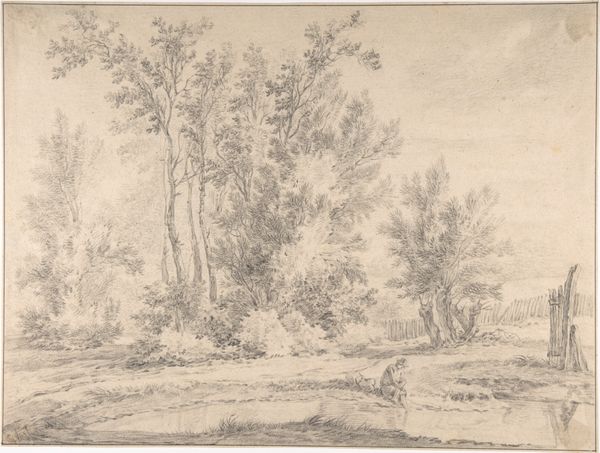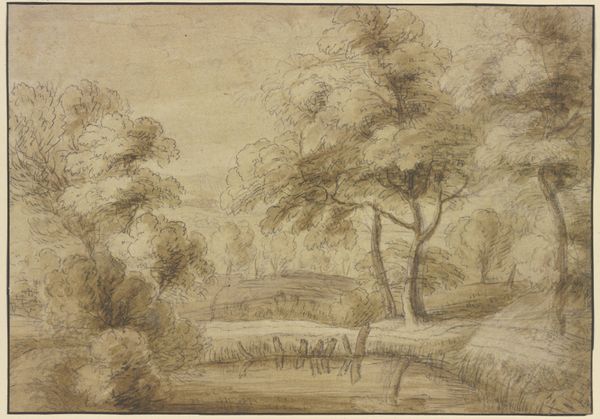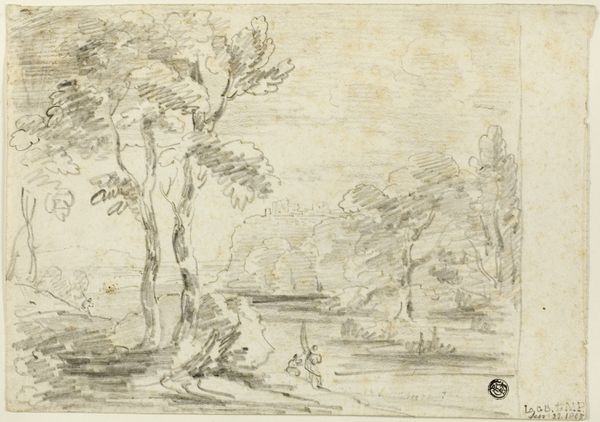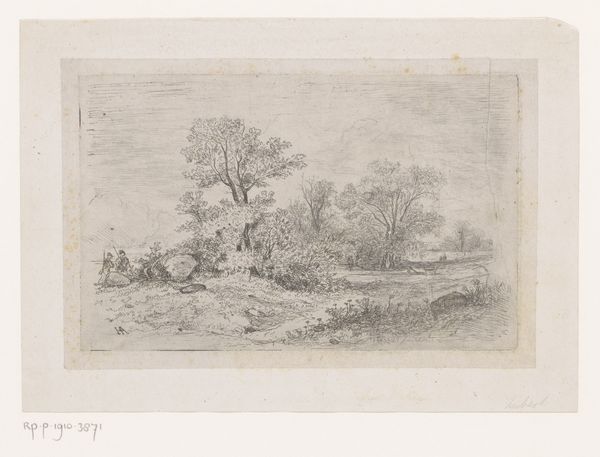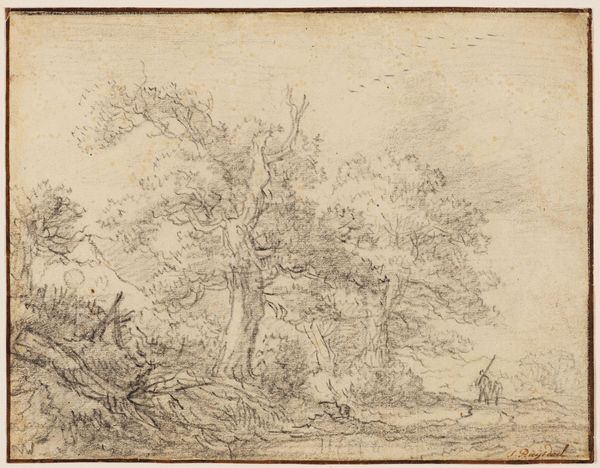
drawing, print, etching
#
drawing
# print
#
etching
#
pencil sketch
#
landscape
#
etching
#
romanticism
Dimensions: height 101 mm, width 157 mm
Copyright: Rijks Museum: Open Domain
Editor: So, here we have "Landscape with Bridge," an etching from 1841 by Jos Hemeleer. It's incredibly delicate; a romantic scene, very picturesque, but almost faded with time. What catches your eye when you look at this piece? Curator: The bridge itself immediately strikes me. Bridges, throughout art history, act as liminal spaces. Here, it literally bridges the known and the unknown. Have you considered the emotional weight a bridge carries? Editor: I guess I was more focused on how it fits within the landscape, a pathway amidst the trees and water. Curator: Exactly! Consider this: What is the function of landscape art during the rise of Romanticism? Nature wasn't just a backdrop, but a space to cultivate individual identity and national identity. Editor: Right, like a search for belonging. What about the trees? They look like they're framing the bridge and drawing attention to it. Curator: Yes! And what do trees often symbolize? Family, strength, the connection between heaven and earth. Do you see how this landscape isn’t merely a representation of a place, but an encoding of cultural values? Editor: I see what you mean. It’s more than just a pretty picture. Curator: Consider, too, the use of etching as a medium. The fine lines lend a certain ethereal quality…a fleeting moment captured. Why would Hemeleer choose this specific way of image making? Editor: Maybe to capture a personal experience, or to highlight the vulnerability of nature and our connection to it? Curator: Precisely! And as we look closer, does it also mirror the temporary human impact on nature? What once felt lost, as a "faded with time" romantic scene, begins to speak with layers of depth. Thank you. Editor: Wow, I hadn't thought about any of that! Looking at art is never the same.
Comments
No comments
Be the first to comment and join the conversation on the ultimate creative platform.


